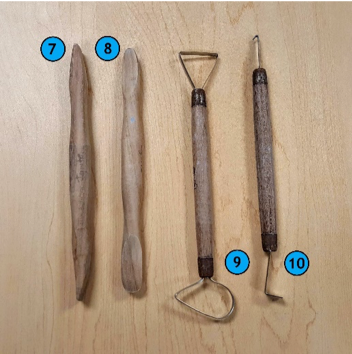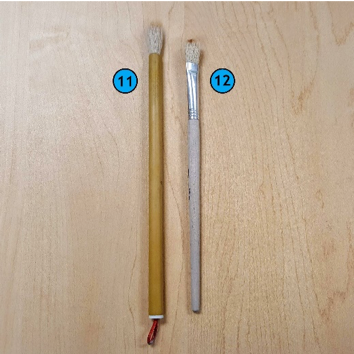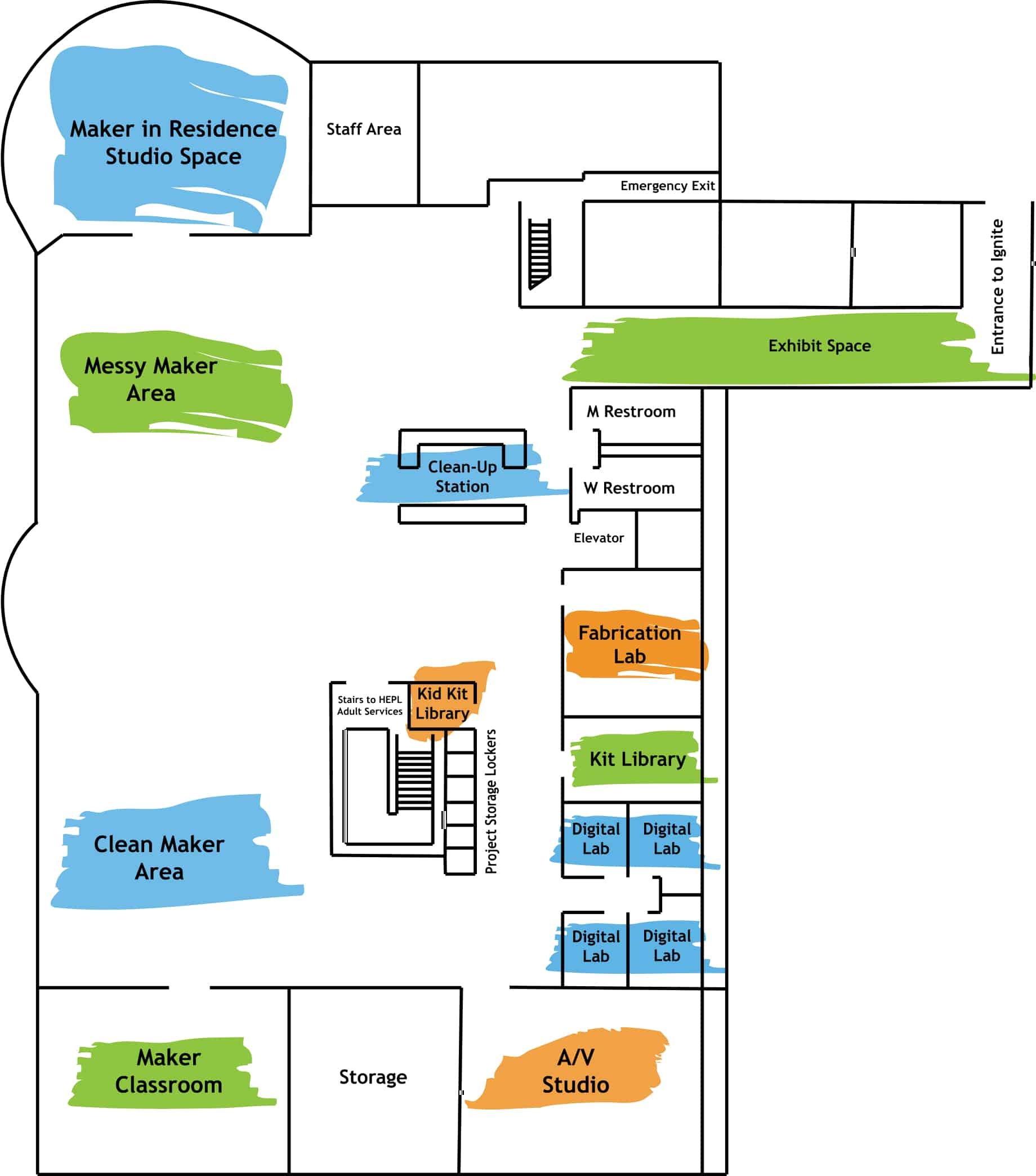By: Megan Smith
Our wheel throwing kits each come with a resourceful book, two buckets, two small sponges, one big clean-up sponge and a container of twelve tools. What are those twelve tools? Below I describe how you can use the tools and have included links to video resources.

1 & 2: Wooden Knives
I like to use a wooden knife to trim my pieces on the wheel as this video demo shows from our YouTube playlist on Wheel Throwing.
3: Needle Tool
Careful, this tool is sharp! I use the needle to draw designs into the surface of my clay and cut out small details. For throwing, I like to trim the tops of my wheel thrown vessels with the tool like how this video shows.

4 & 5: Wooden Ribs
The wooden ribs are excellent for smoothing flat surfaces and cleaning up slip from your wheel thrown pots. The flat side can clean up the outside of your cylinder and the rounded side can help shape the inside of a bowl. Using these tools is an easy way to give your work a nice, smooth surface.
6: Wire Cutter
The most common use of the wire cutter is to remove your pots from the wheel. You can also use this tool to prepare clay from a large block and cut into the sides of a vessel to create riveted texture. Check out this video from our YouTube playlist for a visual demonstration of using the wire cutter.

7 & 8: Wooden Sculpting Tools
Just like the name suggests, you can use these tools for adding details and texture to your creations.
9 & 10: Trimming Tools
These “loop” tools are used for cutting down and trimming clay away. Before you pour your next cup of coffee, turn over your mug a notice the indented bottom and rough foot ring; this is what keeps your coffee warm! Trimming is its own art form and takes a lot of practice to get a smooth foot ring on the bottom of vessels, but it makes a noticeable difference in the quality of your work.

11 & 12: Brushes
These brushes are for applying slip, underglazes and glazes as well as creating texture on clay surfaces. I would use #11 brush for a smoother application of slip, underglaze and glaze; it has softer bristles. Use the #12 brush to create rough texture or apply slip to join pieces together

